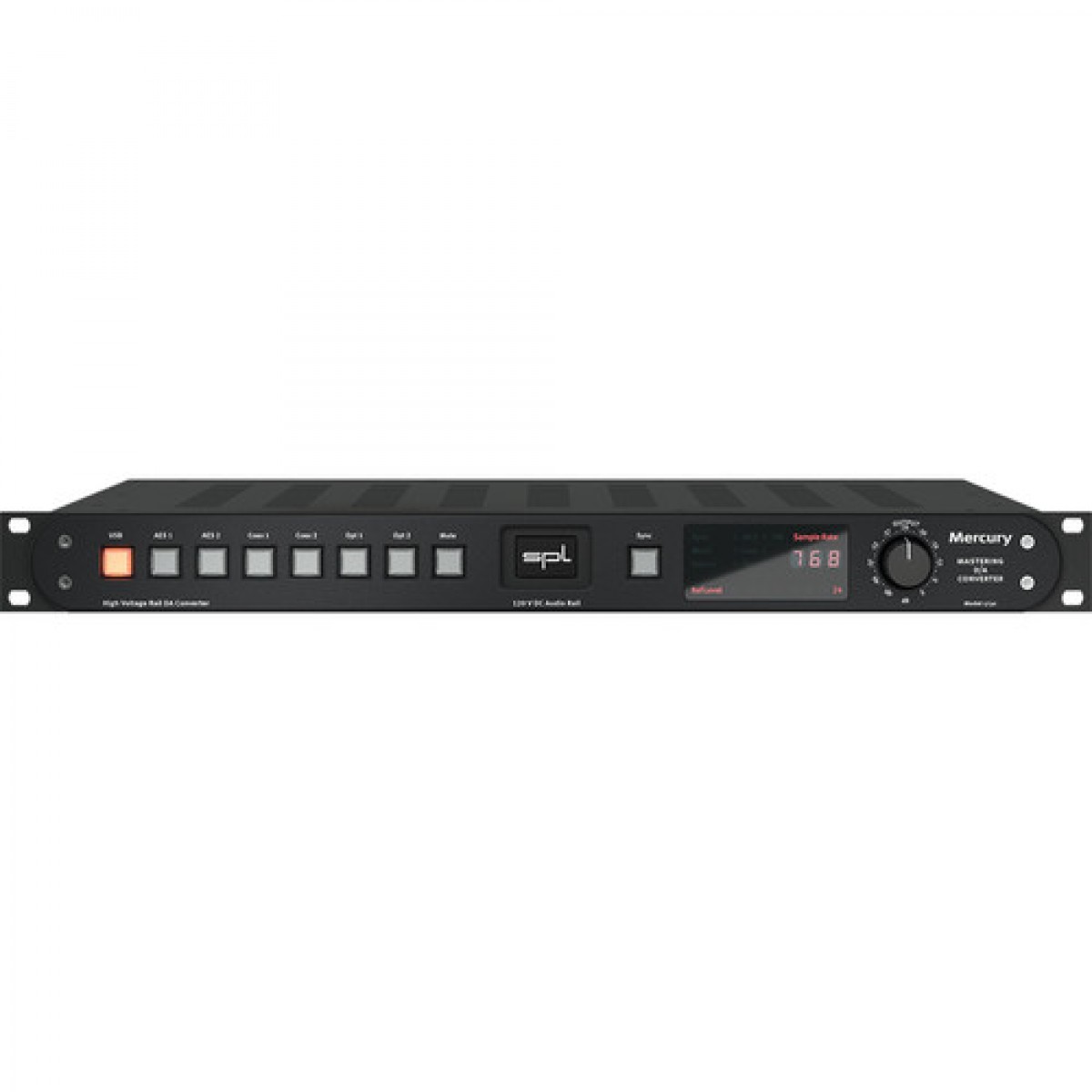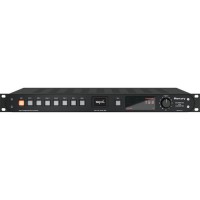- Studio & Recording
- Live Sound
- Room Acoustics
- Software & Plug-ins
- Guitars
- Bass
- Keyboards & Synthesizers
- Microphones
- Drums & Percussion
- DJ Equipment
- Accessories
SPL Mercury Mastering D-A Converter with Monitor Control (Black)
Product Code:
Availability:
Availability:
SPL Mercury (Black)
Call for Availability
Call for Availability
Type
DA Converter
A to D
No
D to A
Yes
Sample Rate
192kHz
Bit Depth
24-bit
Analog Outputs
2 x XLR (var), 2 x XLR (fix)
Digital Inputs
2 x XLR (Dual-Wire, AES/EBU), 1 x XLR (AES/EBU), 2 x Optical Toslink, 2 x Coax (S/PDIF)
USB
1 x Type B
Clock Inputs
1 x BNC
Rack Spaces
1U
Power Source
Standard IEC AC cable
Weight
11 lbs.
World-class “Velvet Sound” Mastering DA Converter
Mercury is the first Mastering DA converter to include SPL’s unique 120V Rail Technology, which provides greater performance. SPL Mercury is a stereo digital-to-analog “Velvet Sound” converter that fulfills the strict technological and audio criteria of world-class mastering companies. It levels the playing field for facilities of all sizes by allowing home and project studios to create premium, sonically competitive output. SPL Mercury has seven digital inputs, including two AES/EBU, two SPDIF, two TOSlink, and USB. AES input 2 also supports the Dual-Wire (DW) option. Each digital source has a separate LED switch for convenient selection and comparison. Studios’ mastering experts are quite thrilled with the SPL Mercury. You will be too.
Modern analog and cutting-edge digital
In Mercury development, SPL design engineers paid careful attention to the analog circuitry, which is commonly overlooked in many DA converter designs that contain cutting-edge digital technology. Perhaps this is because many developers now have a background in digital technology. In contrast, the SPL team contributes three decades of analog knowledge to the Mercury design, so you can anticipate unique, cutting-edge analog technology behind the hood, as well as the most cutting-edge digital technology.
Massive dynamic range
Mercury’s DAC-IC generates an analog signal, which must be lowpass filtered. This analog LP circuit is often powered by the same voltage as the DAC-IC — 5 volts, for example. Consider that the initial stage at which the analog signal is received has a limited dynamic range and signal-to-noise ratio due to the low voltage. That’s quite a bottleneck! Mercury uses SPL’s 120V Rail Technology — twice — in the newly created DLP120 (Dual Low Pass) module, which consists of two independent analog filters employing 120V technology. Depending on the kind of digital transmission, the analog signal travels via the PCM or DSD filter and can stretch its wings, metaphorically speaking, into a vast dynamic range.
The Advantages of 120V Rail Technology
SPL’s 120V Rail Technology allows the Mercury to operate at 120 volts — double that of discrete op-amps and four times that of semiconductor operational amplifiers — resulting in higher technical and acoustic performance. On the technical side, 120V Rail Technology optimizes headroom and dynamic range, resulting in seamless clarity of minute details and a confident, comfortable presentation of program material. Music sounds entirely natural, and listener fatigue is significantly decreased.
Key Features at a Glance
- 7 selectable digital inputs for monitoring
- Synchronization settings are accessible through the Sync switch
- Recalls previous settings upon startup
- Single-wire and dual-wire AES inputs
- Fixed and variable stereo outputs
- Alps RK27 Big Blue pot on variable stereo output
- All except for USB can be synchronized with other sources
- External word clock over BNC jacks
- 44.1 to 768 kHz PCM sample rates
- DSD up to DSD4 or DSD256
- Hold Sthe ync button to access reference-level settings
- Multiple analog calibration options for 0 dBFS
SPL Audio Mastering
ProMusicals © 2020
Made with ♡ by iTGS
ProMusicals © 2025










Reviews (0)